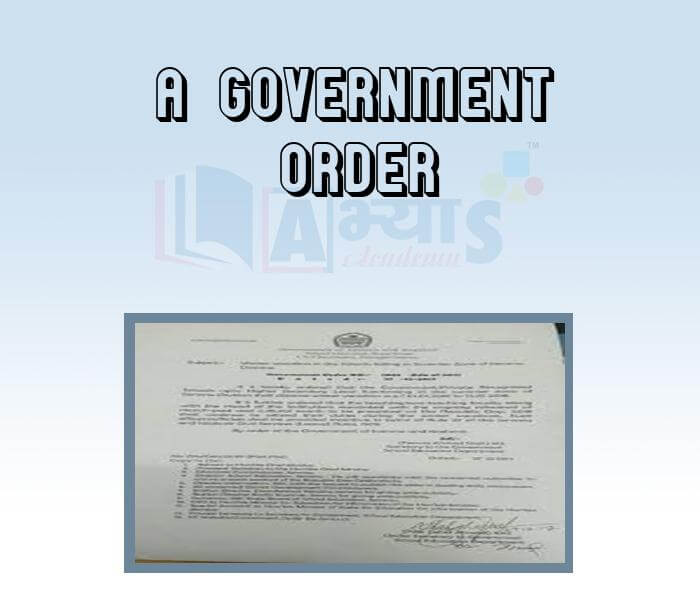A Government Order













A Government Order
A Government Order
· Issuing of Government Order: A government order is a written direction on an signed by a government authority (office). e.g. On 13th August, 1990 the Government of India issued an order. It was called an Office Memorandum. It had a specific number. It was signed by the Joint Secretary, who is an officer in the Department of Personal and Training in the Ministry of Personal, Public Grievances and Pensions.
· Decision Announced by an Order: The order announced a major policy decision. According to the order, 27% of the vacancies in civil posts and services of government were reserved for SEBC (Socially and Educationally Backward Classes). Earlier benefit of job reservation was available to Scheduled Castes (SCs) and Scheduled Tribes (STs). Now the third category SEBC was also eligible for quota of 27%.
· Controversy Over the Order: The issuing of order led to the country wide protest. Some of the protests were violent. As a result, the issue became the most debated in the media with different views and opinions. The people reacted strongly because this decision affected thousands of job opportunities.
· Appeal to Stop Implementation of Order: Some person and associations filed a number of cases in courts against the order. They appealed to declare the order invalid and stop its implementation. This case came to be known as the Indira Sawhney and Others vs Union of India Case.
· Supreme Court’s Declaration Over the Order: By a majority, the Supreme Court in 1992, declared the order valid. It also asked the government to modify its original order.
Modifications in Order and End of Dispute: The order was modified and declared that well-to-do persons of backward classes should be excluded from the benefit of reservation. On 8th September, 1993 another memorandum was issued by the Department of Personal Training. Since then, the dispute ended and the same policy was followed.
Main Events before the Passing of Government Order: The main events before the passing of Government Order for OBC reservation were as follows:
Students / Parents Reviews [10]
My experience with Abhyas is very good. I have learnt many things here like vedic maths and reasoning also. Teachers here first take our doubts and then there are assignments to verify our weak points.

Shivam Rana
7thMy experience was very good with Abhyas academy. I am studying here from 6th class and I am satisfied by its results in my life. I improved a lot here ahead of school syllabus.

Ayan Ghosh
8thIt has a great methodology. Students here can get analysis to their test quickly.We can learn easily through PPTs and the testing methods are good. We know that where we have to practice

Barkha Arora
10thIt was a good experience with Abhyas Academy. I even faced problems in starting but slowly and steadily overcomed. Especially reasoning classes helped me a lot.

Cheshta
10thA marvelous experience with Abhyas. I am glad to share that my ward has achieved more than enough at the Ambala ABHYAS centre. Years have passed on and more and more he has gained. May the centre flourish and develop day by day by the grace of God.

Archit Segal
7thAbout Abhyas metholodology the teachers are very nice and hardworking toward students.The Centre Head Mrs Anu Sethi is also a brilliant teacher.Abhyas has taught me how to overcome problems and has always taken my doubts and suppoeted me.

Shreya Shrivastava
8thMy experience with Abhyas academy is very good. I did not think that my every subject coming here will be so strong. The main thing is that the online tests had made me learn here more things.

Hiya Gupta
8thIt was good as the experience because as we had come here we had been improved in a such envirnment created here.Extra is taught which is beneficial for future.

Eshan Arora
8thI have spent a wonderful time in Abhyas academy. It has made my reasoning more apt, English more stronger and Maths an interesting subject for me. It has given me a habbit of self studying

Yatharthi Sharma
10thOne of the best institutes to develope a child interest in studies.Provides SST and English knowledge also unlike other institutes. Teachers are co operative and friendly online tests andPPT develope practical knowledge also.
